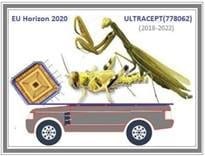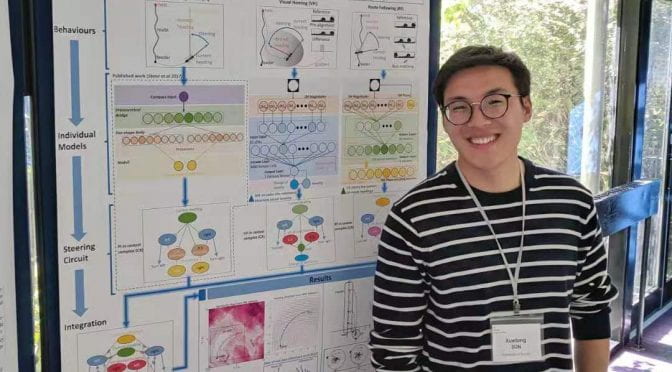The 2019 UK Neural Computation event was held at the University of Nottingham, United Kingdom on the 2nd -3rd July 2019. The full programme can be viewed here.
This event was attended by ULTRACEPT researchers from the University of Lincoln Hongxin Wang, Jiannan Zhao, Fang Lei, Hao Luan and Xuelong Sun.
As well as attending presentations at the event, the researchers attended a tutorial for early PhD student where they learnt a lot about doing research.
Hongxin states “I attended the tutorial, communicated with researchers who worked on relevant fields such as computational neuroscience, and acquired new ideals for further improving robustness of the STMD models and how to simulate feedback mechanism in the STMD neural pathways.”
Jiannan advised that he participated in the meeting discussion, discussed the interesting topic in Neural Computing field.
Modelling the optimal integration of navigational strategies in the insect brain
Xuelong Sun presented a poster at this event. You can view Xuelong’s poster here.
Sun X, Mangan M, Yue S
Insect are expert navigators capable of searching out sparse food resources over large ranges in complex habitats before relocating their often hidden nesting sites. These feats are all the more impressive given the limited sensing and processing available to individual animals. Recently, significant advances have been made in identifying the brain areas driving specific navigational behaviours, and their functioning, but an overarching computational model remains elusive. In this study, we present the first biologically constrained, computational model that integrates visual homing, visual compass and path integration behaviours. Specifically, we demonstrate the challenges faced when attempting to replicate visual navigation behaviours (visual compass and visual homing) using the known mushroom body anatomy (MB) and instead propose that the central 54 complex (CX) neuropil may instead compute the visual compass. We propose that the role of the mushroom body (MB) is to modulate the weighting of the path integration and visual guidance systems depending on the current context (e.g. in a familiar or unfamiliar visual surrounding). Finally, we demonstrate that optimal integration of directional cues can be achieved using a biologically realistic ring attractor network.


